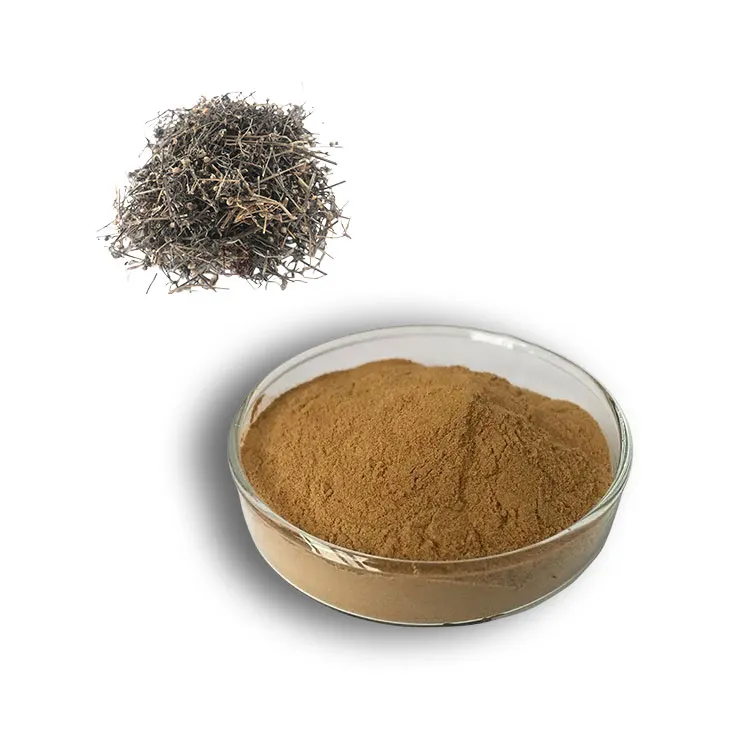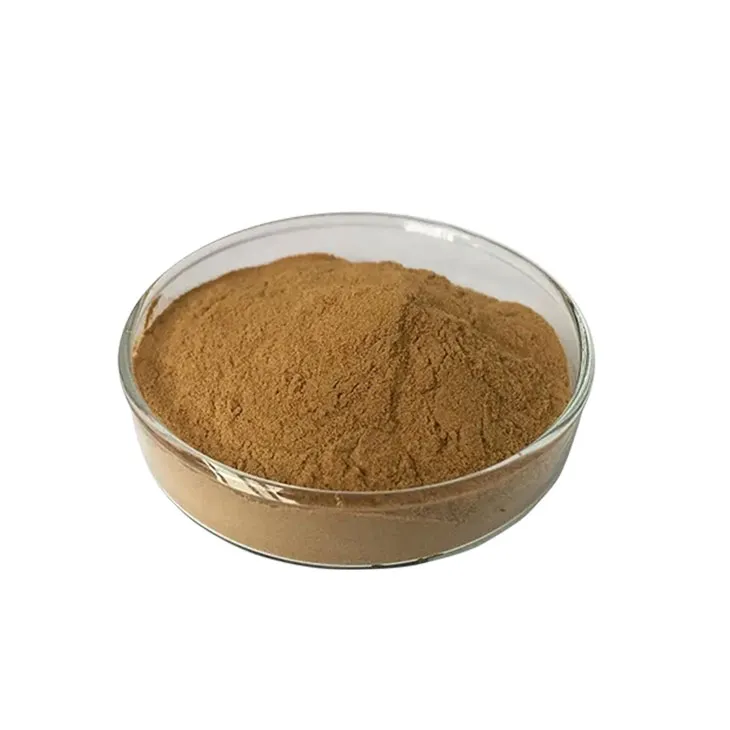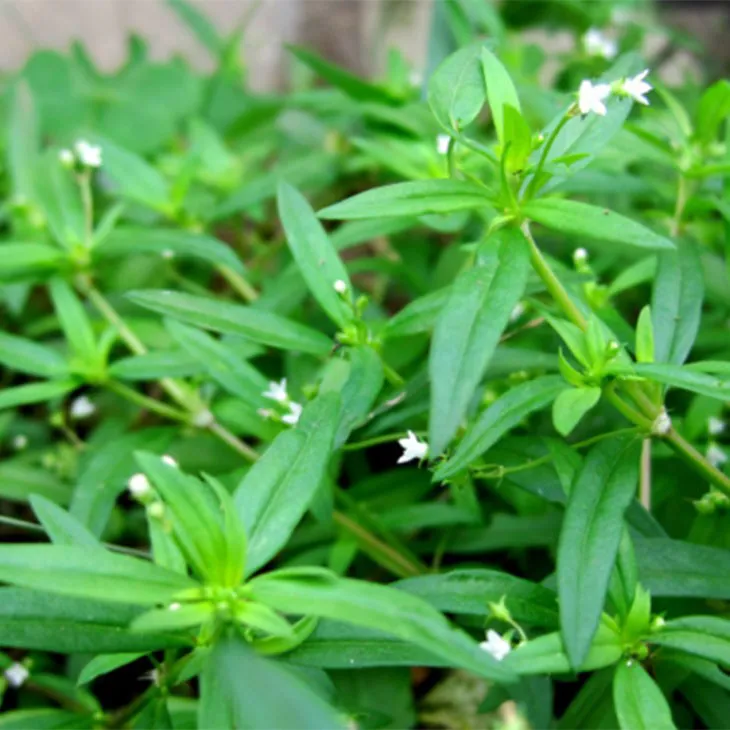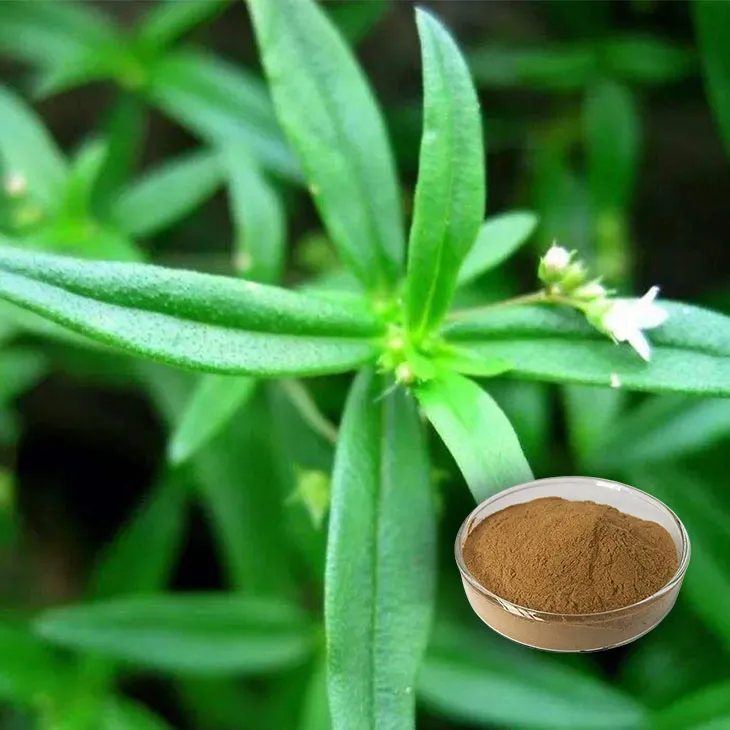- 0086-571-85302990
- sales@greenskybio.com
Extraction Technology and Production Process of Hedyotis Diffusa Extract.
2024-11-27

1. Introduction to Hedyotis Diffusa
Hedyotis Diffusa is a well - known traditional Chinese medicinal herb. It is a perennial herbaceous plant, mainly distributed in tropical and subtropical regions. It has a long history of being used in traditional Chinese medicine for its various medicinal properties.
Morphologically, it has slender stems and small white flowers. The plant contains a rich variety of chemical components, such as flavonoids, iridoids, triterpenoids, and polysaccharides. These components are believed to contribute to its pharmacological activities, including anti - inflammatory, anti - tumor, antibacterial, and antioxidant effects.

2. Extraction Technologies
2.1 Microwave - Assisted Extraction
Microwave - assisted extraction (MAE) is a relatively new extraction technique that has shown great potential in the extraction of Hedyotis Diffusa Extract.
Efficiency: One of the major advantages of MAE is its high extraction efficiency. Microwaves can directly interact with the polar molecules in the plant material, causing rapid heating and accelerating the mass transfer process. This results in a shorter extraction time compared to traditional extraction methods. For example, in the extraction of active components from Hedyotis Diffusa, MAE can significantly reduce the extraction time from several hours to just a few minutes.
Cost: From the cost perspective, although the initial investment in microwave equipment may be relatively high, in the long run, it can save costs. The shorter extraction time means less energy consumption in total. Also, since the extraction efficiency is high, less solvent is required, which further reduces the cost of solvents.
Environmental Impact: MAE is relatively environmentally friendly. The reduced use of solvents means less solvent waste, which is beneficial for reducing environmental pollution. Moreover, the short extraction time also reduces the overall energy consumption, contributing to a lower carbon footprint.
2.2 Ultrasonic - Assisted Extraction
Ultrasonic - assisted extraction (UAE) is another popular extraction method for Hedyotis Diffusa Extract.
Efficiency: UAE utilizes ultrasonic waves to create cavitation bubbles in the solvent. When these bubbles collapse, they generate intense shock waves and micro - jets, which can effectively disrupt the cell walls of the plant material and enhance the release of active components. This leads to a relatively high extraction efficiency. It can also shorten the extraction time compared to some traditional methods.
Cost: In terms of cost, the equipment for UAE is generally less expensive than that for MAE. However, the energy consumption during the ultrasonic process may be relatively high, especially for large - scale extraction. But on the other hand, like MAE, it can also reduce the amount of solvent used due to its high extraction efficiency, thus offsetting some of the cost increases caused by energy consumption.
Environmental Impact: UAE is also considered an environmentally friendly extraction method. The reduced solvent usage helps in minimizing environmental pollution. And although the energy consumption is a concern, continuous improvements in ultrasonic equipment technology are gradually reducing this drawback.
2.3 Comparison of Different Extraction Technologies
When comparing MAE and UAE, both have their own advantages. MAE has a very high extraction efficiency and is more suitable for large - scale industrial production in terms of cost - effectiveness in the long run. UAE, on the other hand, has relatively lower equipment costs initially and can also achieve good extraction results.
In addition to MAE and UAE, there are also traditional extraction methods such as Soxhlet extraction. However, traditional methods generally have lower extraction efficiency, longer extraction time, and higher solvent consumption, which are not as favorable as the modern extraction technologies in terms of cost and environmental impact.

3. Production Process
3.1 Raw Material Pretreatment
The quality of the raw material, Hedyotis Diffusa, is crucial for the production of high - quality extract. Pretreatment of the raw material is the first step in the production process.
Cleaning: The collected Hedyotis Diffusa needs to be thoroughly cleaned to remove dirt, sand, and other impurities. This can be done by washing with clean water multiple times.
Drying: After cleaning, the plant needs to be dried. There are different drying methods, such as air drying and drying in a drying oven. The drying process should be carefully controlled to ensure that the moisture content is within an appropriate range. Over - drying may cause the loss of some active components, while under - drying may lead to mildew during storage.
Crushing: Once dried, the Hedyotis Diffusa is usually crushed into a suitable particle size. This can increase the surface area of the plant material, which is beneficial for the subsequent extraction process.
3.2 Extraction Stage
After the pretreatment of the raw material, the extraction stage begins. As mentioned above, different extraction technologies can be chosen according to the actual situation.
Solvent Selection: The selection of the appropriate solvent is very important for the extraction. For Hedyotis Diffusa, common solvents include ethanol, water, and their mixtures. Ethanol - water mixtures are often used because they can dissolve a wide range of active components in Hedyotis Diffusa.
Extraction Parameters: In addition to solvent selection, extraction parameters such as extraction time, temperature, and solvent - to - material ratio also need to be carefully optimized. For example, in microwave - assisted extraction, if the extraction time is too long, it may cause the degradation of some active components; if the temperature is too high, it may also have a negative impact on the quality of the extract.
3.3 Separation and Purification
After the extraction, the resulting mixture contains not only the desired Hedyotis Diffusa Extract but also impurities such as plant debris and unextracted components. Therefore, separation and purification are necessary steps.
Filtration: Filtration is a common method for removing large - scale impurities. It can be carried out using filter papers, filter membranes, or filter presses. This can effectively remove plant debris and other large - particle impurities from the extract.
Centrifugation: Centrifugation can be used to further separate fine particles and impurities from the extract. By spinning the extract at a high speed, the denser particles will be separated from the supernatant, which is the relatively pure Hedyotis Diffusa extract.
Chromatographic Purification: For a higher - purity extract, chromatographic purification techniques such as column chromatography can be used. This can separate and purify different components in the extract according to their different affinities to the stationary phase and mobile phase, obtaining a highly pure Hedyotis Diffusa extract.
3.4 Quality Control in the Production Process
Quality control is essential throughout the entire production process of Hedyotis Diffusa extract.
Raw Material Quality Control: At the raw material stage, strict quality control should be carried out. This includes the identification of the authenticity of Hedyotis Diffusa, ensuring that it is free from contaminants such as pesticides and heavy metals. Only high - quality raw materials can be used for production.
Intermediate Product Quality Control: During the production process, intermediate products such as the extract after filtration and centrifugation should also be monitored. Parameters such as the content of active components, the purity of the extract, and the presence of impurities need to be regularly tested.
Final Product Quality Control: For the final product, comprehensive quality control is required. This includes not only the determination of the content of active components but also the safety evaluation, such as microbiological testing and toxicity testing, to ensure that the final Hedyotis Diffusa extract meets the relevant quality standards.
3.5 Scale - up from Laboratory to Industrial Production
When scaling up the production process of Hedyotis Diffusa extract from the laboratory to industrial scale, several factors need to be considered.
Equipment Scaling: The extraction equipment used in the laboratory may not be suitable for industrial - scale production. Larger - capacity extraction equipment needs to be selected or designed. For example, in microwave - assisted extraction, industrial - scale microwave reactors need to be designed and optimized to ensure consistent extraction efficiency across large - volume production.
Process Optimization: The extraction process parameters that are suitable for the laboratory may need to be adjusted for industrial production. This includes factors such as extraction time, temperature, and solvent - to - material ratio. Optimization is required to ensure high - quality production while also considering cost - effectiveness and production efficiency.
Quality Control at Scale: With the increase in production scale, quality control becomes more challenging. More advanced quality control methods and equipment need to be adopted to ensure that the quality of the Hedyotis Diffusa extract produced on an industrial scale is consistent with that in the laboratory.

4. Conclusion
In conclusion, the extraction technology and production process of Hedyotis Diffusa extract are complex but crucial aspects in the utilization of this valuable medicinal plant. Different extraction technologies, such as microwave - assisted extraction and ultrasonic - assisted extraction, have their own characteristics in terms of efficiency, cost, and environmental impact. The production process involves multiple stages, from raw material pretreatment to extraction, separation and purification, and quality control at each stage. When scaling up from laboratory to industrial production, careful consideration of equipment, process optimization, and quality control is necessary. Overall, continuous research and improvement in these areas will contribute to the better development of the production of Hedyotis Diffusa extract and its application in the fields of medicine and health.

FAQ:
What are the main characteristics of Hedyotis Diffusa?
Hedyotis Diffusa is a plant with certain medicinal value. It usually has small white flowers. It contains various chemical components such as flavonoids, alkaloids and polysaccharides. These components are related to its potential pharmacological effects, such as antioxidant, anti - inflammatory and antibacterial activities.
What are the advantages of microwave - assisted extraction in extracting Hedyotis Diffusa extract?
Microwave - assisted extraction has several advantages. Firstly, it can significantly shorten the extraction time compared to traditional extraction methods. This is because microwaves can directly heat the internal part of the plant material, accelerating the mass transfer process. Secondly, it may have relatively high extraction efficiency, which can extract more target components. In terms of cost, although the initial investment in microwave - assisted extraction equipment may be relatively high, in the long - run, due to its high efficiency, it can reduce the overall cost per unit of extract. From an environmental perspective, it usually consumes less solvent, which is more environmentally friendly.
What are the key points of quality control in the production process of Hedyotis Diffusa extract?
In the production process of Hedyotis Diffusa extract, quality control at different stages is crucial. Firstly, the raw material quality should be strictly controlled. This includes ensuring that the Hedyotis Diffusa used is of the correct species, free from contaminants such as pesticides and heavy metals. During the extraction process, parameters such as extraction time, temperature, and solvent ratio need to be monitored and adjusted to ensure consistent product quality. After extraction, purification and concentration steps also need to be carefully controlled to ensure the purity and stability of the final extract. Additionally, final product testing for quality indicators such as active ingredient content, microbial limit, and solubility is essential.
How does ultrasonic - assisted extraction affect the extraction of Hedyotis Diffusa extract?
Ultrasonic - assisted extraction has a positive impact on the extraction of Hedyotis Diffusa extract. The ultrasonic waves can cause cavitation effects in the solvent, which helps to break the cell walls of the plant material more effectively. This allows for better release of the active components inside the cells. In terms of efficiency, it can increase the extraction yield in a relatively short time. Regarding cost, like microwave - assisted extraction, although there is equipment cost, it can potentially reduce the overall cost in large - scale production due to its efficiency. From an environmental aspect, it can also use less solvent compared to some traditional extraction methods.
What challenges are there in scaling up the production process of Hedyotis Diffusa extract from laboratory to industrial production?
Scaling up the production process of Hedyotis Diffusa extract from laboratory to industrial production faces several challenges. One of the main challenges is the control of process parameters. In the laboratory, it is relatively easy to precisely control parameters such as temperature, pressure, and reaction time. However, in industrial production, ensuring the same level of control on a large scale is more difficult. Equipment differences also play a role. Laboratory - scale equipment may not be directly applicable to industrial - scale production, and new equipment needs to be designed or adjusted. Another challenge is the cost. The cost structure changes significantly during scale - up, including raw material procurement in large quantities, energy consumption, and waste management. Quality control also becomes more complex at an industrial scale, as larger volumes of products need to be monitored and tested to ensure consistent quality.
Related literature
- Study on the Extraction Technology of Hedyotis Diffusa Active Components"
- "Optimization of the Production Process of Hedyotis Diffusa Extract"
- "Analysis of the Chemical Components in Hedyotis Diffusa and Their Extraction Efficiency"
- ▶ Hesperidin
- ▶ citrus bioflavonoids
- ▶ plant extract
- ▶ lycopene
- ▶ Diosmin
- ▶ Grape seed extract
- ▶ Sea buckthorn Juice Powder
- ▶ Beetroot powder
- ▶ Hops Extract
- ▶ Artichoke Extract
- ▶ Reishi mushroom extract
- ▶ Astaxanthin
- ▶ Green Tea Extract
- ▶ Curcumin Extract
- ▶ Horse Chestnut Extract
- ▶ Other Problems
- ▶ Boswellia Serrata Extract
- ▶ Resveratrol Extract
- ▶ Marigold Extract
- ▶ Grape Leaf Extract
- ▶ blog3
- ▶ blog4
-
Chinese lotus leaf extract suppliers.
2024-11-27
-
Nature's Bounty Tongkat Ali Extract Powder.
2024-11-27
-
Nature's Bounty lotus leaf extract.
2024-11-27
-
Organic Almond Extract Powder Supplier.
2024-11-27
-
Bulk purchase of camu - camu extract.
2024-11-27
-
Fig Extract
2024-11-27
-
Lemon Balm Extract
2024-11-27
-
Saponin Extract
2024-11-27
-
Moringa powder
2024-11-27
-
Dandelion Leaf Extract
2024-11-27
-
melatonin extract
2024-11-27
-
Nettle Root Extract
2024-11-27
-
American Ginseng Root Extract
2024-11-27
-
Tamarind extract powder
2024-11-27
-
Elderberry Extract
2024-11-27





















